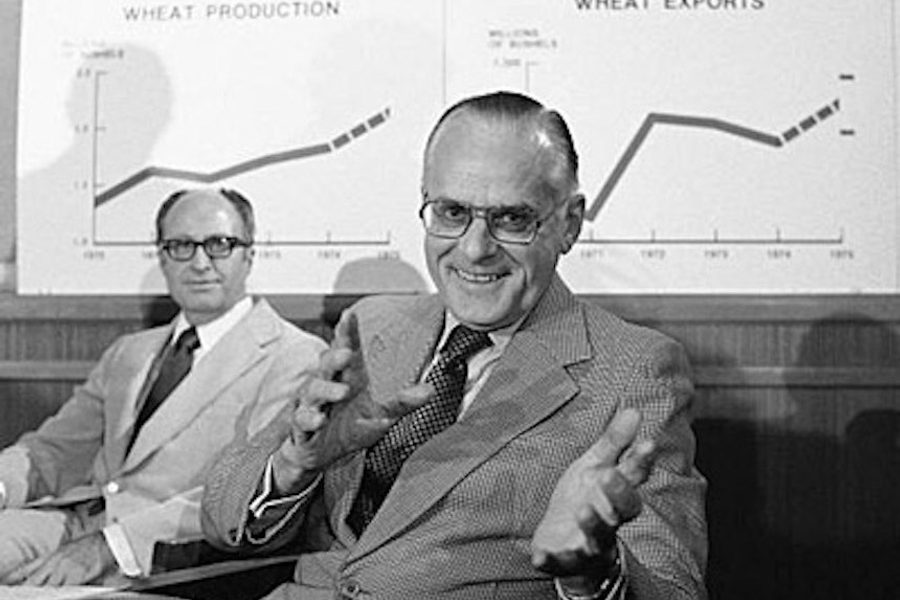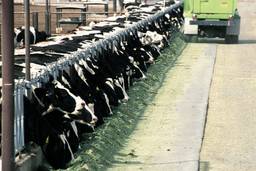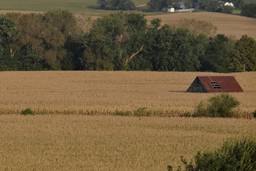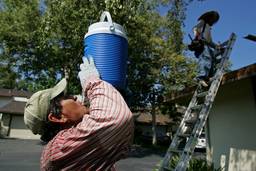
The increase in size of U.S. farms has been motivated by the quest for economic efficiency in an effort to reduce the financial costs of food. However, the “true” cost of food also includes costs that are not currently reflected in the costs of production — these are instead “externalized” or imposed on society and nature.
The external economic costs of farming have risen as farms have grown larger, so it’s reasonable to believe a relationship exists between farm size and external economic costs. The “true” cost of American food, however, must include the non-economic social and ecological costs that cannot be converted into economic costs or internalized. Furthermore, there are good reasons to believe the non-economic costs of large farms may matter even more than the external economic costs.
An implicit assumption of “true cost accounting” is that costs should include the cost of sustainability — in the case of food, this means including the full economic, social, and ecological costs of sustainable farming. Previous concerns for ecological and social externalities have now merged into concern for sustainability: an ability to meet the needs of all in the present without diminishing opportunities for the future.
Most advocates of sustainable agriculture seem to believe that in farming size doesn’t matter. They contend that farms can be managed sustainably or unsustainably regardless of how large or small they may be. I readily admit that most small farms today are probably unsustainable. However, I believe today’s so-called “modern” large farms would need to be managed like well-managed small farms in order to be sustainable.
Admittedly, my conclusions reflect how I distinguish between large and small farms. I consider a farm to be a single management unit — meaning a combination of land, labor, and capital, managed as a single farm or economic entity. The size of a farm then reflects the number of acres of land, dollars invested, and hours of labor that are managed as a single economic entity.
Labor is a bit more complex than land and capital. The work of farming traditionally combines the functions of management and labor. Farmers are not inanimate machines but thinking workers and working thinkers. As farms grow larger managers tend to replace thinking workers with mechanical and digital technologies, employing fewer people as workers, as well as fewer managers. So smaller farms tend to be more “human-intensive” than large farms and more management-intensive. Also, as management becomes less intensive, farms must grow larger in value of production in order to maintain an acceptable total return to management.
A single management unit can obviously include far more acres, laborers, and dollars of investment in some types of farming operations than in others. For example, a small beef cattle ranch would be a very large chicken farm, at least in terms of acres of land. A larger market garden would also be a small corn, soybean or wheat farm. That said, for similar types of farming operations, and for farms in general, the greater the management intensity or human intensity, the smaller the size of the farm in terms of land and capital and in total value of production. In other words, the less-intensive or more-extensive the management, the larger the farm or ranching operation.
Farm size matters because management intensity matters. Management intensity determines whether the economic benefits go primarily to farmers or instead go mostly to those who own farmland and have capital to invest in farming. So, management intensity determines how much economic benefit remains in rural communities and how much of it leaves to feed financial markets. But even more importantly, management intensity matters because the sustainability of a farming operation depends on the intensity with which farms are managed. The stereotypical large farms of today’s agriculture are not unsustainable because they are large, they are large because they are managed unsustainably. They are unsustainable because they are managed “extensively” — meaning they rely more on land and capital and less on thinking people.
“The quest for economic efficiency has actually made the hunger problem worse, not better.”
Sustainable farms, by definition, must meet the basic food needs of all in the present without diminishing opportunities for the future. Today’s large farms are doing neither. The primary justification for government programs that have subsidized large farms was to reduce food costs so everyone would have enough good food to support active healthy lifestyles: food security. But the percentage of people in the United States classified as “food insecure” today is about three-times larger than during the 1960s. More than 15 percent of Americans are classified as food-insecure and more than 20 percent of our children live in food insecure homes.
In addition, typical American diets today are higher in calories and apparently lacking in essential nutrients, as reflected in an epidemic of obesity and other diet-related health problems—including diabetes, heart disease, hypertension, and various diet-related cancers. As America’s farms grew larger during the latter 1900s, the percentage of an American’s disposable income spent for food dropped by one-half, but the percentage of GDP going to health care more than doubled.
Simple correlations do not prove causality, but there is reason to believe this relationship is not coincidental. The challenge of food security simply cannot be met by making food cheaper. It is a problem of social and economic inequity rather than economic inefficiency. The quest for economic efficiency has actually made the hunger problem worse, not better.
Today’s large, unsustainable farms are degrading the health of soils and mining the productivity of the land; polluting the air, streams, and aquifers with agrochemical and biological wastes; and degrading and demeaning the agricultural workforce. These are all essential resources for the future productivity of American agriculture. With nearly 80 percent of total value of agricultural production in the United States accounted for by farms with more than $350,000 in gross farm cash income, the lack of long-run sustainability of American agriculture obviously cannot be blamed on mismanagement of America’s small farms.
Farms in America were much smaller prior to the 1940s — the years preceding World War II. Most pre-war farms were diversified, with a number of different crops and livestock enterprises managed so as to maintain the fertility of the soil and to manage weeds and other agricultural pests. Post-depression, pre-war farm policies in the United States were focused on increasing the productivity of intensively-managed family farms as a means of ensuring domestic food security by keeping diversified family farmers on the land to produce enough food to meet the needs of all. These traditional family farms were as much way of life as a means of making a living. They balanced the economic, social, and land stewardship traditions of family farming — earning an economic living in order to pursue a chosen “way of life.”
Following World War II, the chemical and mechanical technologies developed for warfare were transformed into the agricultural technologies that became critical in supporting the industrialization of American agriculture. Farmers no longer needed to rely on diversified, integrated crop and livestock systems to maintain soil fertility or manage pests; they could use cheap synthetic fertilizers and commercial pesticides. Farmers could plant, cultivate and harvest far more acres with tractors than horses. Land devoted to horse feed was converted to cash crops, generating far more income than the cost of cheap fossil fuels. The vagaries of nature were being tamed with new industrial technologies; allowing farmers to specialize, routinize, and accumulate capital to consolidate existing small farms into fewer large farming operations.
“The negative economic externalities of large farms were not widely anticipated and still remain largely unappreciated.”
Equally important, the transition to the industrial system of agriculture was supported by government programs, including public research and education, which promised lower food costs for American consumers and more profits for American farmers. The industrialization of agriculture replaced supporting family farms as a means of ensuring domestic food security (although the “family farm rhetoric” of farm policy continues even today). Agricultural production increased and Americans were able to spend a smaller share of their income for food as small, diversified family farms were replaced by larger specialized, industrial farm businesses.
Between 1940 and 1980, farms in the United States dropped from 6.1 million, 175 acre farms to 2.4 million, 426 acre farms, and the percentage of the U.S. workforce employed in agriculture dropped from 18 percent to 3.4 percent. Eventually large cropping and livestock operations were organized and managed like factories without roofs and fields. And feedlots functioned as biological assembly lines. Land and capital were substituted for thinking workers. Small, intensively-managed family farms were replaced by large, extensively-managed industrial farms.
The negative economic externalities of large farms obviously were not widely anticipated and still remain largely unappreciated. The public mandate of agricultural industrialization was to increase economic efficiency. But economic value is different from intrinsic value. Economic value is a reflection of scarcity, not human necessity. Scarcity means there is not enough of something for everyone to have all they want.
For example, while air is intrinsic or essential for human life, air has no economic value until clean air is made scarce by pollution. Food is valuable only because it is scarce — meaning not enough of it for everyone to have all they want. The driving force of the agricultural economy and supportive agricultural policies was to reduce the economic costs of food. While the preoccupation was on reducing the economic costs of food, little attention was given to the impacts on food quality or quality of life in rural communities.
The increases in economic efficiency associated with consolidation of small farms into managed farms brought a growing list of public concerns— including pollution of air and water with chemical and biological wastes, the demise of family farms, and economic and social decay of rural communities. These large, extensively managed farming operations resulted in the same basic negative economic externalities as those experienced by other industrial sectors of the U.S. economy. However, unlike other industrial sectors, industrial agriculture remained largely unregulated.
Today, the outdated public image of farming is still that of the traditional diversified, small-scale, family farm. But the reality is quite different.
(This text, separated into three parts, was adapted from a presentation prepared and delivered by John Ikerd on April 16, 2016 at The True Cost of American Food Conference in San Francisco, Calif. It is reposted on Rural America In These Times with permission from the author. For more information, or to subscribe to Mr. Ikerd’s blog, visit JohnIkerd.com.)








